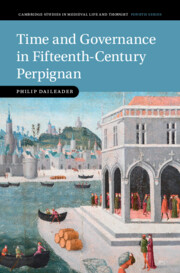Refine search
Actions for selected content:
245 results
Creative Characterization and Narrative Innovation in Post-Soviet Azerbaijani Literature: Identity, Memory, and Cultural Transformation
-
- Journal:
- Iranian Studies ,
- Published online by Cambridge University Press:
- 24 October 2025, pp. 1-22
-
- Article
-
- You have access
- Open access
- HTML
- Export citation
24 - The Nation’s Image in Songs: Folk Music Research and Revival in the Twentieth Century
- from Part III - The Twentieth Century and Beyond
-
-
- Book:
- A History of Music in the Czech Lands
- Published online:
- 21 October 2025
- Print publication:
- 16 October 2025, pp 335-348
-
- Chapter
- Export citation
Ukrainian Russophones’ Engagement with Language Education Policies
-
- Journal:
- Nationalities Papers , FirstView
- Published online by Cambridge University Press:
- 15 October 2025, pp. 1-22
-
- Article
-
- You have access
- Open access
- HTML
- Export citation
Host-Country Identification Among Early Modern Immigrants: A Case Study of the Late Eighteenth-Century Dutch Republic
-
- Journal:
- Social Science History , First View
- Published online by Cambridge University Press:
- 14 October 2025, pp. 1-18
-
- Article
-
- You have access
- Open access
- HTML
- Export citation
Chapter 7 - Politicians as Communicative Anchors
-
- Book:
- Politicians and Mass Media in the Age of Empire
- Published online:
- 20 September 2025
- Print publication:
- 09 October 2025, pp 258-297
-
- Chapter
- Export citation
Globalising Vietnam’s national identities in the early twentieth century
-
- Journal:
- International Journal of Asian Studies , First View
- Published online by Cambridge University Press:
- 01 October 2025, pp. 1-19
-
- Article
-
- You have access
- Open access
- HTML
- Export citation
9 - Sounding the Nation(s)
- from Part II - The Conceptual Presence of Strings
-
- Book:
- Violin Culture in Britain, 1870–1930
- Published online:
- 13 September 2025
- Print publication:
- 18 September 2025, pp 262-303
-
- Chapter
- Export citation
Chapter 6 - 1989–2022
-
- Book:
- The Convention and the Kingdom
- Published online:
- 08 August 2025
- Print publication:
- 28 August 2025, pp 276-332
-
- Chapter
- Export citation
Chapter 4 - Municipal Citizens, Royal Subjects, and Catalans
-
- Book:
- Time and Governance in Fifteenth-Century Perpignan
- Published online:
- 26 July 2025
- Print publication:
- 14 August 2025, pp 131-163
-
- Chapter
- Export citation
Fractured Pasts? Views on Soviet History Among Russians and Ukrainians Prior to the 2022 Invasion
-
- Journal:
- Nationalities Papers , FirstView
- Published online by Cambridge University Press:
- 11 August 2025, pp. 1-22
-
- Article
-
- You have access
- Open access
- HTML
- Export citation
Lightning-Sword and Blazing Steed under the Hammer and Sickle: The Rebirth of David of Sassoun in Soviet Armenia
-
- Journal:
- Nationalities Papers , FirstView
- Published online by Cambridge University Press:
- 30 July 2025, pp. 1-27
-
- Article
-
- You have access
- Open access
- HTML
- Export citation

Time and Governance in Fifteenth-Century Perpignan
-
- Published online:
- 26 July 2025
- Print publication:
- 14 August 2025
Conclusion: Reflections, Ideas, Supplements
- from Part IV - Scholarship
-
-
- Book:
- The Cambridge Companion to <i>The Rite of Spring</i>
- Published online:
- 28 June 2025
- Print publication:
- 17 July 2025, pp 285-298
-
- Chapter
- Export citation
Difficult Public History and National Identity in Aotearoa New Zealand: A Narrative Approach to Museum Analysis
-
- Journal:
- Nationalities Papers , FirstView
- Published online by Cambridge University Press:
- 23 May 2025, pp. 1-23
-
- Article
-
- You have access
- Open access
- HTML
- Export citation
Flowing Back to the Future: The Cheongye Stream Restoration and the Remaking of Seoul
-
- Journal:
- Asia-Pacific Journal / Volume 9 / Issue 27 / July 2011
- Published online by Cambridge University Press:
- 07 May 2025, e1
-
- Article
-
- You have access
- Open access
- Export citation
Rooted in identity, aimed at security: Polish politics towards Ukraine and its ontological security foundation
-
- Journal:
- European Journal of International Security , First View
- Published online by Cambridge University Press:
- 07 April 2025, pp. 1-21
-
- Article
-
- You have access
- Open access
- HTML
- Export citation
‘Killing the Practice of Whale Hunting is the same as Killing the Japanese People’: Identity, National Pride, and Nationalism in Japan's Resistance to International Pressure to Curb Whaling
-
- Journal:
- Asia-Pacific Journal / Volume 14 / Issue 8 / April 2016
- Published online by Cambridge University Press:
- 14 March 2025, e1
-
- Article
-
- You have access
- Open access
- Export citation
Olympic Dissent: Art, Politics, and the Tokyo Olympic Games of 1964 and 2020
-
- Journal:
- Asia-Pacific Journal / Volume 16 / Issue 15 / August 2018
- Published online by Cambridge University Press:
- 14 March 2025, e2
-
- Article
-
- You have access
- Open access
- Export citation
Conflicting Japanese Responses to the Syrian Refugee Crisis
-
- Journal:
- Asia-Pacific Journal / Volume 15 / Issue 24 / December 2017
- Published online by Cambridge University Press:
- 14 March 2025, e2
-
- Article
-
- You have access
- Open access
- Export citation
No Country for Blue Helmets: South Korean National Identity on the Screen in ‘Descendants of the Sun’
-
- Journal:
- Asia-Pacific Journal / Volume 16 / Issue 11 / June 2018
- Published online by Cambridge University Press:
- 14 March 2025, e3
-
- Article
-
- You have access
- Open access
- Export citation
